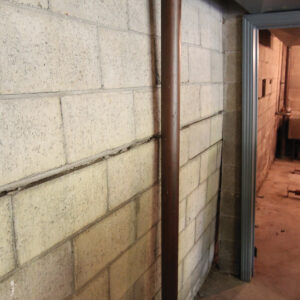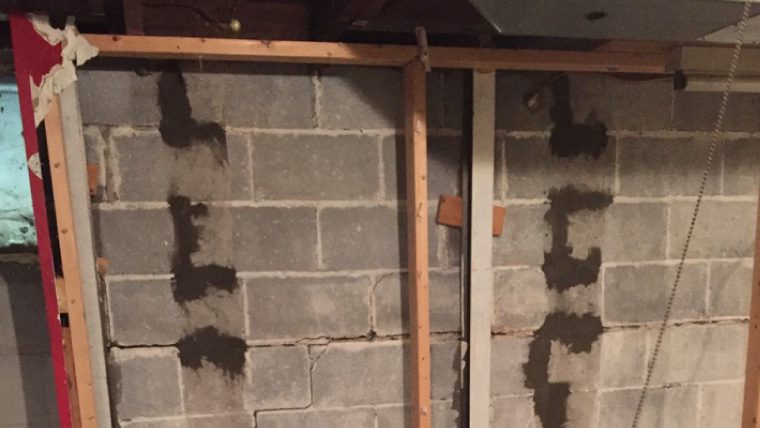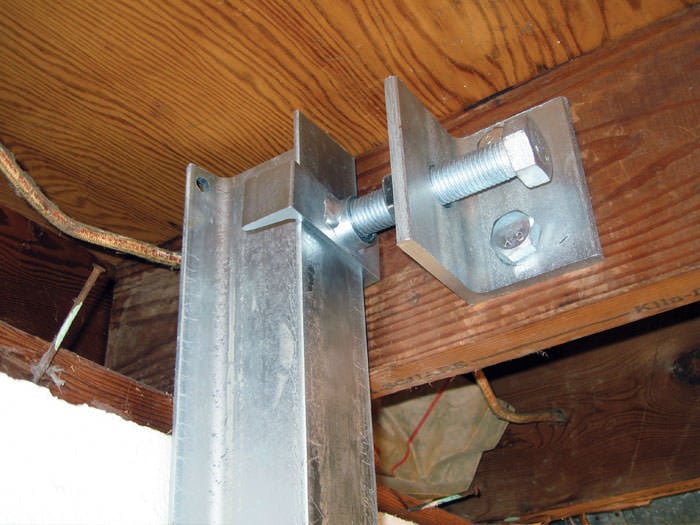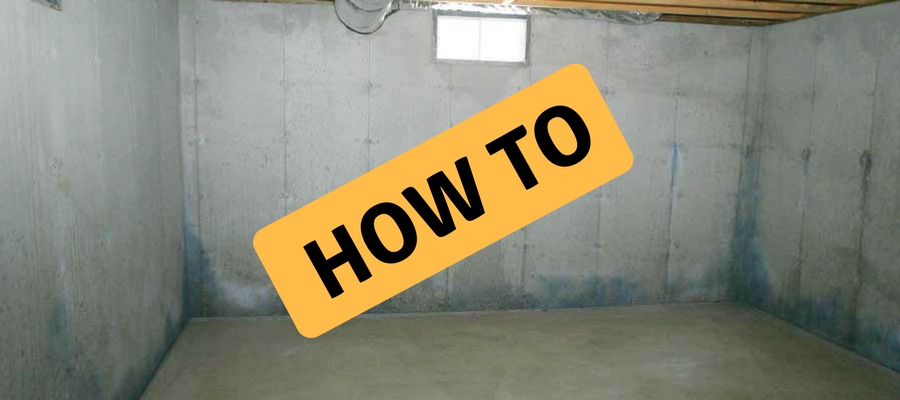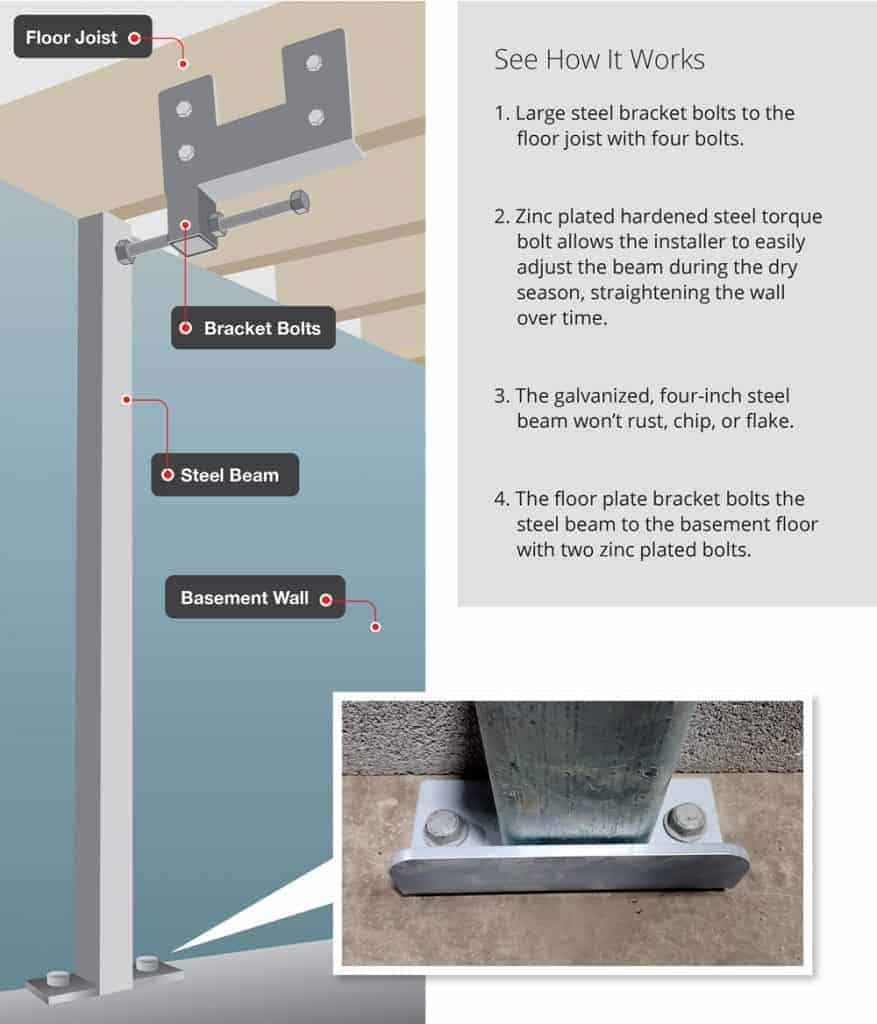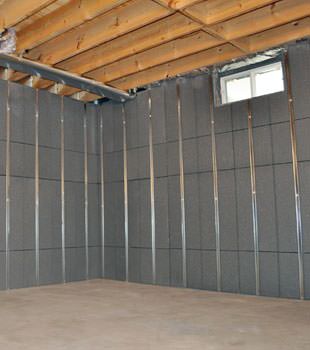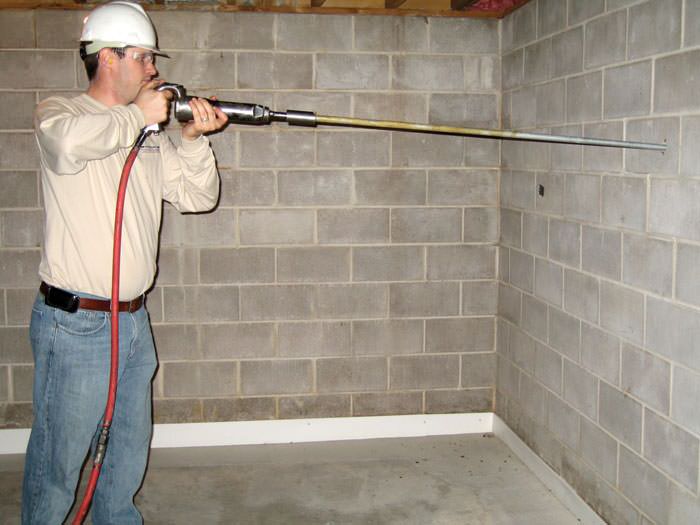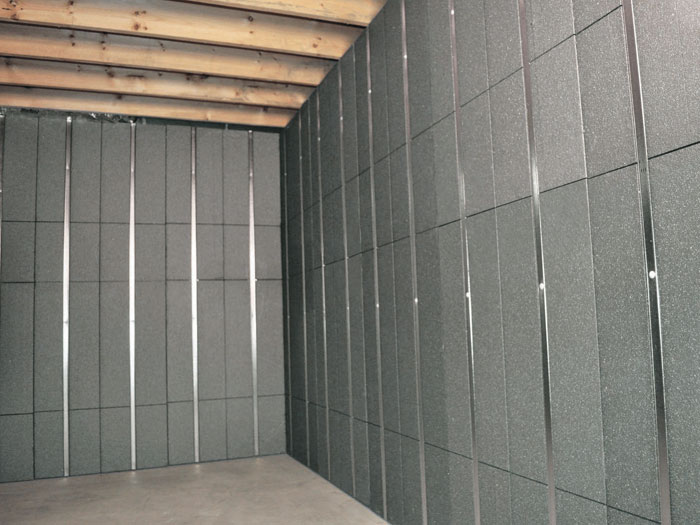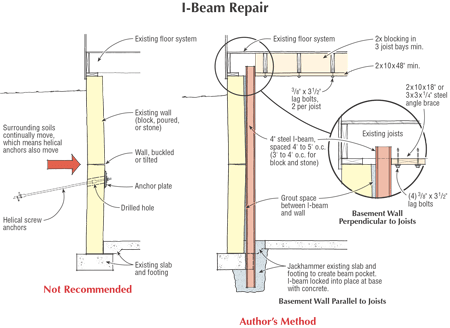Basement Wall Bowing 1 Inch
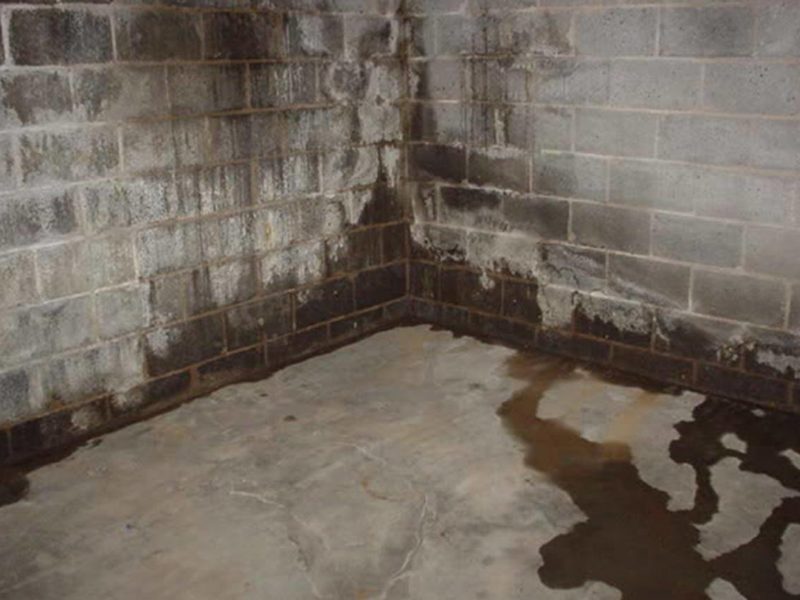
All three of these scenarios indicate that the concrete block foundation is unstable and a failure is more likely to occur.
Basement wall bowing 1 inch. Structural wood frame wall is out of plumb wood framed walls shall not be more than 3 8 inch out of plumb for every 32 inches in any vertical measurement. Stud walls can be constructed to finish the basement as if no repair were present. As a rule concrete blocks should be straightened if the bowing is more than 2 inches inward. Carbon fiber repair can be done at a lower cost than steel.
A concrete block foundation wall should be straightened when the inward movement exceeds two and a half inches the blocks shatter or if the second course of block has shifted laterally more than 1 inch. Had a similar problem with a poured wall. When the pressure becomes too much for the wall to handle it starts to bow crack or even break. This often occurs when gutters are left unattended and rain water spills over them or downspouts drop right next to the foundation.
The most common cause for foundation walls bowing in is saturated clay soils in the backfill. Hydrostatic pressure occurs when water presses against the basement walls causing the weight against the walls to exceed their capacity. Bowing walls occur most often due to the force of hydrostatic pressure. You might also notice that your basement walls are bowed.
Basement walls concrete block or poured concrete walls shall not be out of plumb greater than 1 1 2 inches in 8 feet when measured from the base to the top of the wall. If you notice any cracks in the wall then they will need your attention first. Wall most bulged in near the outdoor ground surface commonly occurs in the upper 1 2 of the wall perhaps at a depth equal to the frost line in climates where freezing occurs or in the top 1 3 of the wall if we suspect water or frost loading on the wall or possibly vehicle traffic driving too close to the wall. The wall should also be straightened if the blocks in the wall shatter or if a block in the wall shifts more than 1 inch laterally.
It is important to have your basement inspected by a professional and licensed contractor. The first thing you need to do is tear down anything that covers your basement wall so that you can examine the problem. Walls can also bow and fail when expansive clays or frost cause expansion of the soils to fatigue and damage the wall. Remove as much of the covering as possible so that you can look at the whole wall.
Bowing basement walls bowing walls occur when a home s foundation walls curve inward forming a bow the most common cause of a bowing or leaning wall is excessive lateral pressure on the exterior. Its only disadvantage is that it is effective only when walls have bowed or moved less than two inches. 4 20ton hydraulic jacks and 3 months of dry weather keeping pressure on the jacks day nad night.



